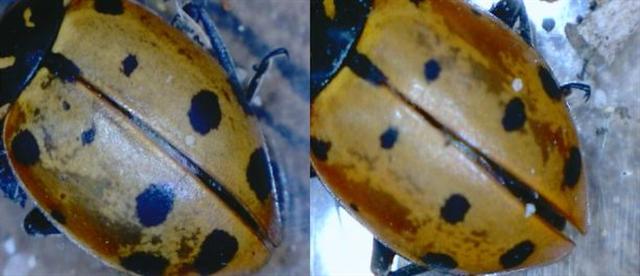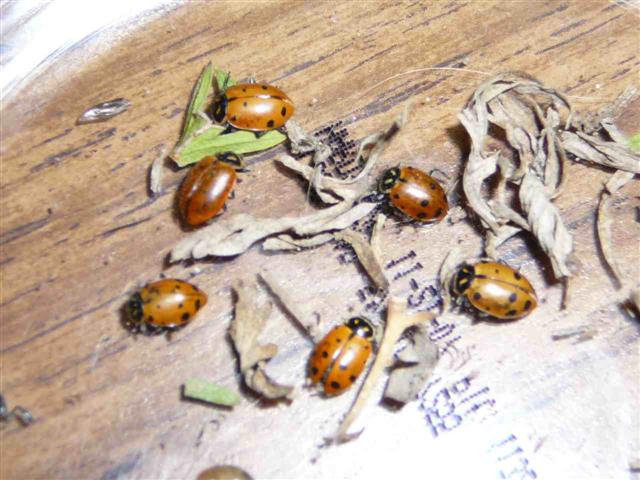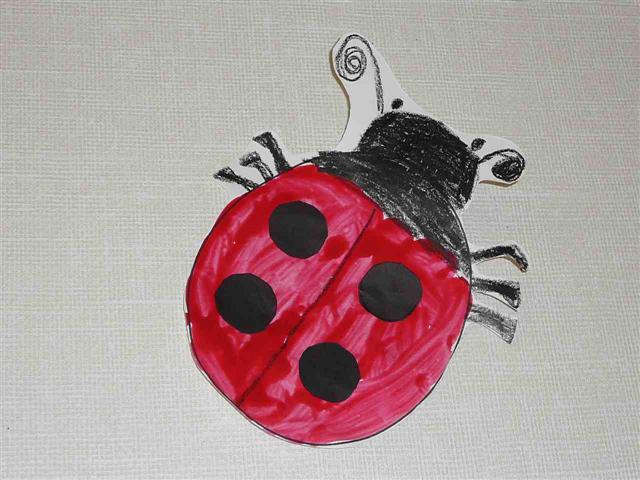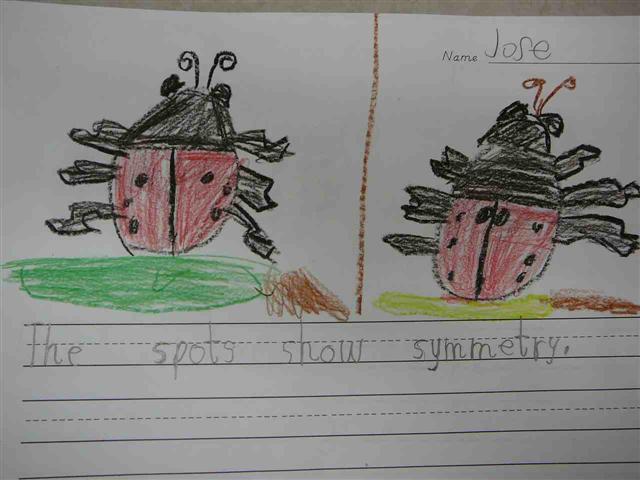|
Our ladybug project included reading poems and books (The
Ladybug and Other Insects, a Scholastic First Discovery
Book, Ladybugs, Red, Fiery, and Bright, by Mia
Posada, and The Grouchy Ladybug by Eric Carle), looking
for true facts and discussing them. We also watched a couple
United Streaming videos, one which showed ladybug swarms in the
springtime. Then we made some predictions about ladybugs (see
our data chart in the bulletin board picture—our predictions are
in red and findings are in green.)
We looked at over 100 ladybugs using a magnifying glass
and a USB microscope and two close up pictures of ladybugs taken
with the USB microscope camera--note the differences in the size
of the spots.

We looked at over 100 ladybugs using a magnifying glass and a
USB microscope (see the picture of ladybugs in a petrie dish and
two close up pictures of ladybugs taken with the USB microscope
camera--note the differences in the size of the spots).

We noted the pattern of spots, how many, the color, etc. We
graphed how many spots we saw on the ladybugs and wrote
conclusions (see the bulletin board picture).


We also enjoyed creating ladybugs with crayon and paint and
gluing on spots to show symmetry (see picture of ladybug on the
wall).

We created a ladybug addition project in the computer lab.

We wrote a class fact book about ladybugs.

This entire project was done as the inquiry project in our
Open Court unit on Animals.
Universal Design for Learning (UDL) principles used in our
Ladybug Project…
MULTIPLE FORMATS--Information presented through discussion,
books read aloud, United Steaming videos, and a USB microscope
for looking at live ladybugs up close.
MULTIPLE STRATEGIES-- the scientific method approach for
evaluating the spots on live ladybugs, using a USB microscope,
computers, writing, and art.
LEARNING--Students demonstrated learning through collecting
and graphing data, a computer project, arts and crafts project,
and written pages for a class book telling ladybug facts.
UDL GOALS
1) Recognition goals--Students were focused on learning facts
about ladybugs and completed a science project that studied the
spots on ladybugs.
2) Strategic Goals--Using the scientific method the students
made predictions, collected data, and drew conclusions about
ladybug spots.
3) Affective Goals--Students shared their understanding of
symmetry, counting, tallying, addition facts, artistic
expression, and written expression, including content learned.
|

